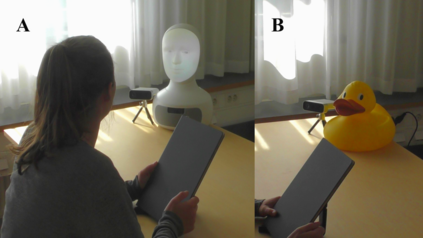While thinking aloud has been reported to positively affect problem-solving, the effects of the presence of an embodied entity (e.g., a social robot) to whom words can be directed remain mostly unexplored. In this work, we investigated the role of a robot in a "rubber duck debugging" setting, by analyzing how a robot's listening behaviors could support a thinking-aloud problem-solving session. Participants completed two different tasks while speaking their thoughts aloud to either a robot or an inanimate object (a giant rubber duck). We implemented and tested two types of listener behavior in the robot: a rule-based heuristic and a deep-learning-based model. In a between-subject user study with 101 participants, we evaluated how the presence of a robot affected users' engagement in thinking aloud, behavior during the task, and self-reported user experience. In addition, we explored the impact of the two robot listening behaviors on those measures. In contrast to prior work, our results indicate that neither the rule-based heuristic nor the deep learning robot conditions improved performance or perception of the task, compared to an inanimate object. We discuss potential explanations and shed light on the feasibility of designing social robots as assistive tools in thinking-aloud problem-solving tasks.
翻译:虽然有人报告说,有人大声疾呼,对解决问题产生了积极的影响,但一个有代表性的实体(如社会机器人)的存在,其言词可以向它发出,其影响在很大程度上仍未得到探讨。在这项工作中,我们调查了机器人在“灌木鸭除虫”环境中的作用,分析机器人的监听行为如何支持解决思考问题的会议。与会者在对机器人或无生命物体(巨型橡胶鸭)大声疾呼时完成了两项不同的任务。我们在机器人中实施和测试了两类听众行为:一种基于规则的超光速和深层次学习模式。在对101名参与者进行的主题间用户研究中,我们评估了机器人的存在如何影响用户对高声思考、任务期间的行为以及自我报告用户的经验。此外,我们探讨了两个机器人的监听行为对这些措施的影响。与以前的工作相比,我们的结果表明,基于规则的超常或深层学习的机器人状况都没有改善工作表现或任务感知力,与设计无生命的机器人工具相比,我们评估了机器人对如何思考问题的潜在可能性。我们讨论了如何思考问题。我们讨论了如何解释,作为机器人工具的可行性。






